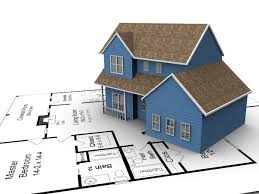What are the top 10 worldwide trends in affordable housing development?

1. Sustainable and eco-friendly housing: With increasing concerns about the environment, affordable housing developments are adopting sustainable practices such as energy-efficient design, use of renewable materials, and incorporation of green technologies like solar panels and rainwater harvesting systems.
2. Mixed-income housing: Many affordable housing projects are moving away from concentrated poverty and adopting mixed-income models. These developments integrate affordable units with middle-income or market-rate housing, promoting socio-economic diversity in communities.
3. Transit-oriented development (TOD): To improve access to transportation and reduce dependency on personal vehicles, affordable housing projects are being developed near public transportation hubs. TODs increase mobility options for residents and promote sustainable urban planning.
4. Co-living and shared spaces: With rising housing costs, co-living and shared spaces have gained popularity. Affordable housing developments often include shared amenities like communal kitchens, living areas, and co-working spaces to reduce individual costs and foster community engagement.
5. Adaptive reuse of buildings: Converting existing structures into affordable housing units has become a trend in many countries. Abandoned factories, warehouses, or even old schools are repurposed, reducing construction costs and revitalizing underutilized areas.
6. Modular and prefabricated construction: To streamline the construction process and reduce costs, affordable housing projects are increasingly using modular and prefabricated construction methods. These systems allow for faster construction, improved quality control, and cost savings.
7. Accessory dwelling units (ADUs): ADUs, also known as granny flats or carriage houses, are gaining popularity as an affordable housing solution. Homeowners can convert existing structures or add secondary units to their properties, creating additional affordable housing options within established neighborhoods.
8. Community land trusts (CLTs): CLTs are nonprofit community organizations that acquire and hold land to provide affordable housing. This model ensures long-term affordability by separating the ownership of the land from the housing units, allowing CLTs to control costs and preserve affordability.
9. Micro-housing and tiny homes: Compact living solutions like micro-housing units and tiny homes are being explored as affordable options. These smaller dwellings provide basic amenities in a minimized footprint, enabling more affordable homeownership or rental opportunities.
10. Innovative financing options: To bridge the financing gap in affordable housing development, various funding models are emerging. Social impact investing, public-private partnerships, and innovative financing mechanisms like micro-lending and crowdfunding are being utilized to fund affordable housing projects.


